Level Up Your Lunch: Miki Bihon Guisado – The Easy & Flavorful Filipino Dish
Are you ready to enhance your taste buds with Filipino dishes, like those of Amber? Have you ever tasted Mike Bihon Guisado, a Filipino stir-fried food containing both egg noodles and rice noodles? Like many Pancit dishes, the Mike noodles are a sort of egg noodle, thicker in size while Bihon, the thinner one, are similar to rice noodles.
This fabulous mixture of meat and veggies with seafood can elevate your taste for a midday snack. It may also serve as a filling dish if you meet friends for lunch or have the craving to eat full. So if you are about to look for a Filipino and savoury dish this article is for you.
Serving sizes and price on Amber Menu:
| Serving Size | Price | Calories |
|---|---|---|
| Single Order | ₱ 60.00 | 330 KCal. |
| 3-5 Persons | ₱ 370.00 | 650 KCal. |
| 6-10 Persons | ₱ 620.00 | 1300 KCal. |
| 11-15 Persons | ₱ 730.00 | 1950 KCal. |
| 16-20 Persons | ₱ 840.00 | 2600 KCal. |
| 21-25 Persons | ₱ 950.00 | 3250 KCal. |
How to Cook Miki Bihon Guisado?
Well! It takes less than an hour to cook this delicious recipe. Follow the instructions for cooking to serve it accordingly.
- Pick boneless meat which might be chicken breast or pork/beef/fish balls
- Select vegetables according to your preferences
- Select your marine product. Seafood may include shrimp or oysters
- Add Mike noodles (pale yellow noodles/egg noodles)
- Put Bihon noodles into the mixture
- Mixing and stirring the dish with high and medium flame accordingly
- Add broth according to the quantity of noodles
- Avoid overcooking noodles i.e check that noodles do not soak too much liquid
- Serve With citrus fruit for garnishing

Preparation Time: 20 Minutes
Cooking Time: 20 Minutes
Total time: 40 minutes
See How Easy It Is! Miki Bihon Guisado Recipe Video:
Ingredients
To have this great dish we will need the ingredients given below:
- 8 ounces of dry Miki noodles
- 4 cups of chicken stock
- 8 Ounces Of Bihon noodles (comprising 1 package)
- Use Canola oil
- Half a pound of skinned and deveined shrimp
- 1 cup of halved fish balls
- 1 (small) chopped and skinned onion
- 2 cloves of Skinned and minced garlic
- Half a pound of chicken thigh meat without bone and skin
- 2 carrots (skinned and thinly striped large)
- 1 (small) chopped napa cabbage
- 1/4th a cup of Kecap Manis
- Pepper and salt for seasoning
- Chopped onions (the green ones)
- Wedges of lemon or calamansi
Ingredients notes
The rules and formula of ingredients are not really strict. You are at great liberty in cooking this dish with any variety of meat, seafood, and veggies available.
- Miki is pale yellow egg noodles that are normally soft in stature.
- Bihon are dry thin noodles composed of cornstarch or rice flour. You can store it without refrigeration.
- The meat should be without bone and skin which can be replaced with breast chicken if you do not need much meat. However, you may use pork, beef, and Hamonado or lap Cheong sausages.
- Seafood is one of the trademarks of Filipino food and this dish is equally enriched with. You may use fish balls, shrimp, or squid balls.
- Skin the shrimp with great care and make it ready for cooking. Note that it may spoil a bit of its sweetness upon cooking.
- Napa cabbage, carrots, green beans, green onions, and snow peas can fill the slot of veggies. Feel free to use your own choice.
- Kecap Manis: Manis means sweet in Malay or Indonesian language. Here it denotes sweet soy sauce. Its flavor resembles that of molasses because it has a large amount of palm sugar. It is seasoned with garlic.
- Adding star anise to our dish can greatly enrich our Miki Bihon. (Star Anise is a spice used in Chinese tradition for the treatment of fungal, viral, and bacterial infections. It is used in dishes like savor and meats. It is liked by many for its sweet-licorice-peppery flavor)
Kecap manis alternative
You can replace sweet soy sauce with an easy-to-hand substitute. Take one-quarter of soy sauce with ⅛ part of brown sugar. Mix in a saucepan. Heat over low flame and proceed until it gets thick and syrupy.
Instructions
- Put the chicken stock in a large skillet and heat over medium heat to boil.
- Keep Bihon under the surface of the liquid and cook for a minute or two, it will result in softening the Bihon. Reserve 2 cups broth while draining noodles.
- Use a large pan to heat a tablespoon of oil.
- Put shrimp and keep cooking for up to 120 seconds as long as its color turns pink. Separate it from the flame and drain it with paper towels.
- Adding fish balls might need more oil, therefore wipe down the pan. Keep cooking until the fish ball gets lightly browned. Use paper towels for drainage after removing from the fire. Place it separately.
- Now put in onions and garlic and keep cooking until it becomes soft.
- Now add chicken for cooking and keep stirring for five minutes maximum or when its color turns light brown.
- Now add in carrots and cook for 60 seconds.
- Add cabbage and cook for another 1 minute.
- Now add shrimp and fish balls to the pot and keep cooking veggies until they turn crispy.
- Now remove from flame and place separately.
- Pour 2 reserved cups of broth into the pot/pan and Kecap Manis. Keep stirring and boil them after they are combined.
- Now mix Miki noodles properly in the broth. Miki will soften after soaking in the broth. Keep it continuous from 1 to 2 minutes.
- Now mix Bihon noodles and vegetables, and add salt and pepper as per your taste.
- Keep cooking and mixing for 5 minutes (maximum). Make sure the noodles are not overcooked and ready to bite, vegetables are crispy and the broth is absorbed according to your preferences.
- Serve it hot on a serving platter. For adornment and adding taste, serve with green onion and Calamansi.

Cooking Tips
- Miki noodles need hot water for cooking so that there is no natural oil remaining, and the noodles don’t get soupy.
- In the case of Bihon, breathing is better than soaking in warm water. Adding to chicken stock brings a more unique flavor to it. This step does not take too long which involves softening of noodle strands.
- For healthy and brisk cooking, cut the meat and vegetables in uniform sizes.
- Use a wok for stir-frying but using a large pot having high sides is not a bad choice either.
- To avoid breakage of noodles and keep them intact use a pair of tongs so that it helps you in tossing the ingredients together.
Important Notes
- It is best to have dry or fresh Miki noodles but if you don’t have them, replace them with 16 ounces, soaking it in hot water to get rid of natural oils.
- Keep the submerging process brief so that noodles don’t get mushy
- In case you don’t have sweet soy sauce, put soy sauce and brown sugar in a ratio of ¼ and ⅛ respectively put them together in a saucepan, cooking it on less heat so that it gets thick and syrupy.
Serving Options
Miki Bihon is served as a mid-day snack as well as a Filling dish. Being a stir-fried food Miki Bihon is enjoyed with fresh citrus like lemon and calamansi
For preserving the leftover you need to place it in a pot that can be closed with a lid. It should be refrigerated for 72 hours.
Note: This dish is not freezing-friendly and may turn mushy when frozen and thawed. You may reheat it in the microwave with a gap of 60 to 120 seconds. Until heated completely you need to stir it during the gap of time.
Nutritional information
- Carbohydrates: 40 g
- Protein: 17 g
- Fat: 12 g
- Saturated Fat: 3 g
- Trans fat: 1 g
- Cholesterol: 82 mg
- Sodium: 489 gm
- Potassium: 434 gm
- Fiber: 2 gm
- Sugar: 7 gm
- Vitamin A: 1945 IU
- Vitamin C: 23 mg
- Calcium:102 mg
- Iron: 2 mg
FAQs
Conclusion
To sum up, Miki Bihon Guisado offers a great combination of flavors and textures. It presents the significance of Filipino cuisine. This stir-fried dish brings great options for using different meats, seafood, and veggies with a sweet and savory addition of Kecap Manis. With its nutritional balance and serving options, it’s perfect for any meal. Though not freezer-friendly, leftovers can be refrigerated for up to 72 hours. Miki Bihon Guisado is a culinary journey that celebrates Filipino hospitality and tradition.

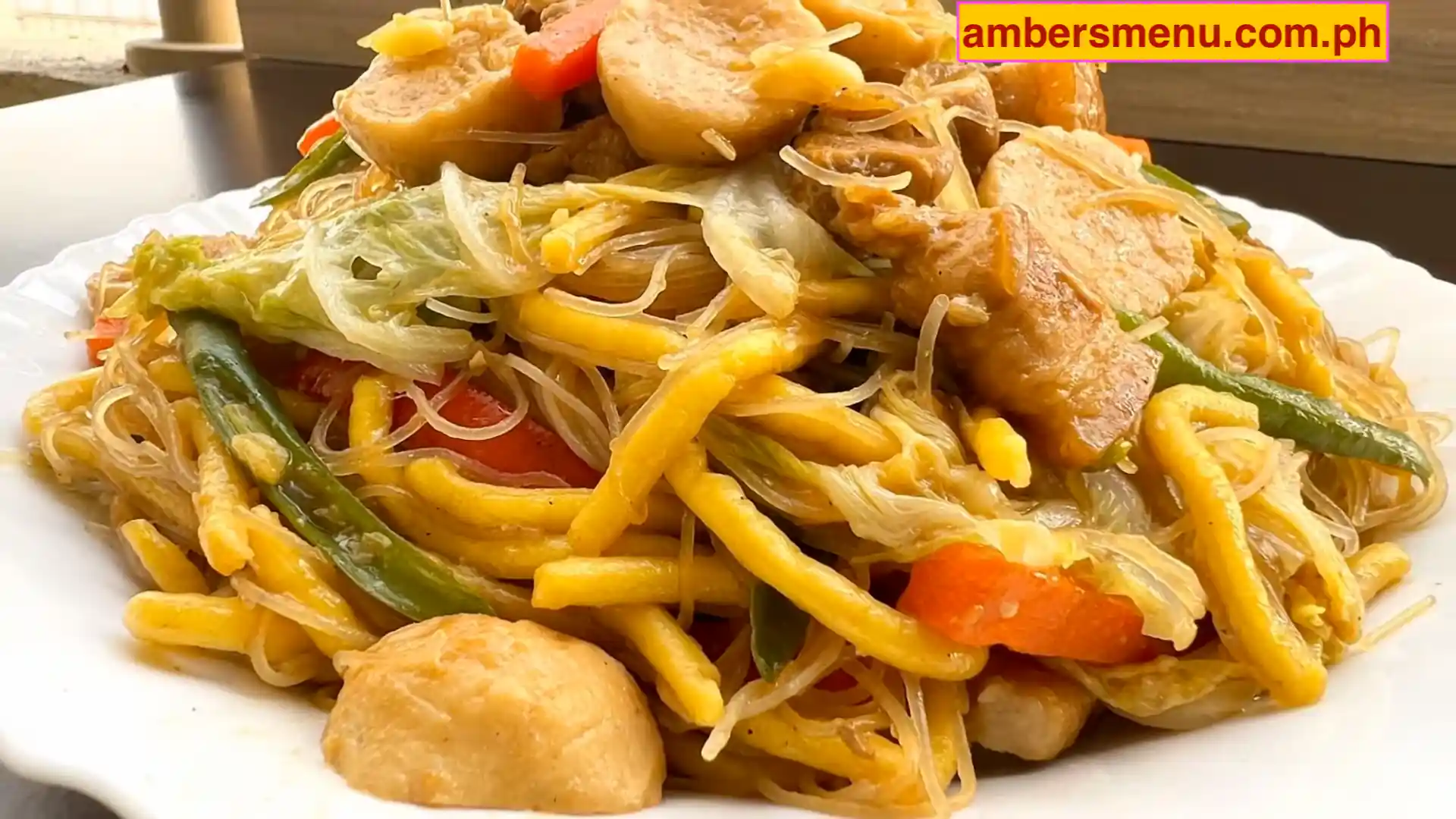

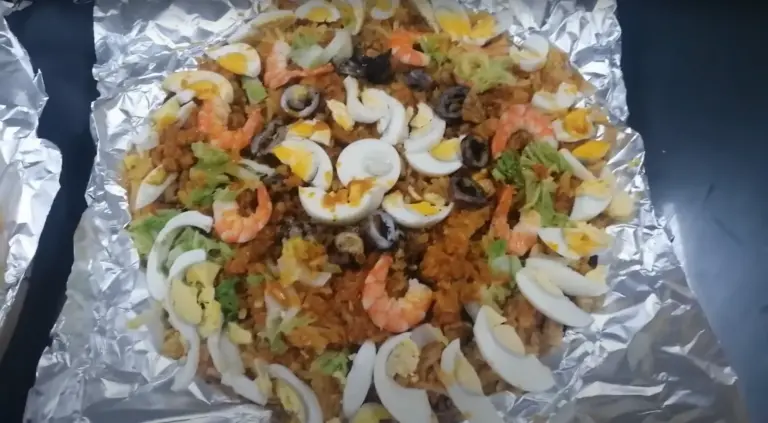

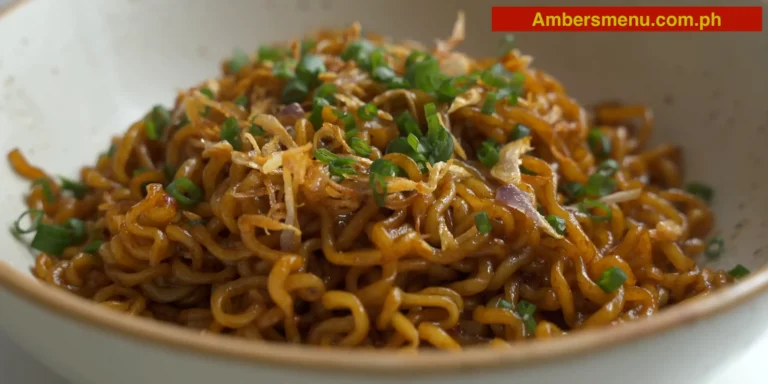
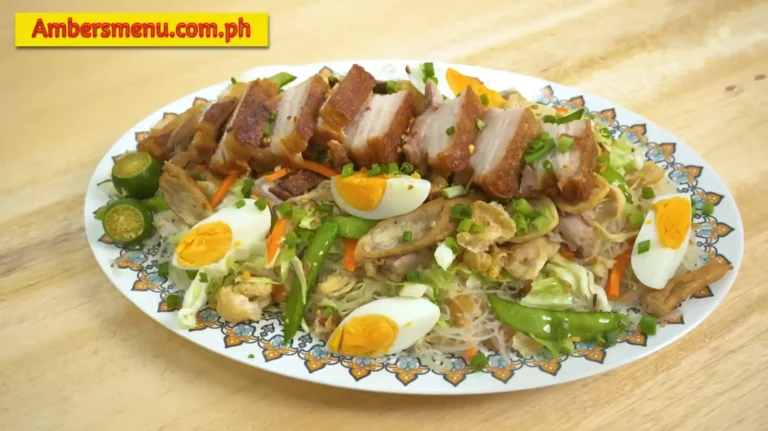
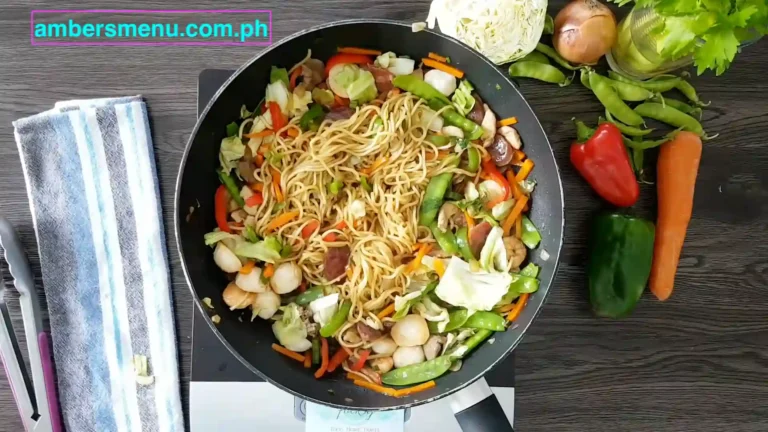
One Comment